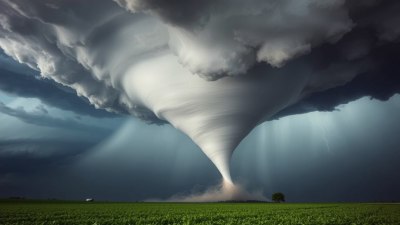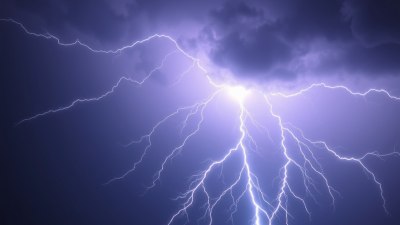Why Some Rainstorms Smell Like Sulfur The Mystery of Atmospheric Chemistry
Explore the reasons behind the sulfur smell in rainstorms and the atmospheric chemistry involved.

Image by prostooleh on Freepik
The freshness of rain often comes with a distinct aroma, a scent that many people associate with the great outdoors. However, some rainstorms bring an unexpected odor, reminiscent of sulfur. This peculiar smell can be disconcerting, leading many to question its origins and implications. In this article, we will explore the atmospheric chemistry behind sulfurous odors during rainstorms, delving into the sources, chemical reactions, and environmental factors that conjoin to create this unique sensory experience.
Understanding the Smell of Rain
The smell of rain, often referred to as 'petrichor,' contributes to the freshness we feel after a downpour. This scent is primarily due to oils released from soil microorganisms and plants, combined with various organic compounds. However, when rain has a sulfur-like odor, an entirely different chain of events comes into play. It is essential to distinguish between the general scent of rain and the distinct smell of sulfur.
Sources of Sulfur Compounds
Several sources contribute to the sulfur compounds that may be detected in the atmosphere, primarily when it rains. The most common are natural and anthropogenic emissions, which include volcanic eruptions, industrial activities, and the decomposition of organic matter. Volcanic eruptions release significant amounts of sulfur dioxide (SO2), which can transform into sulfuric acid when combined with water vapor, leading to acid rain. Less dramatic, but similarly impactful, is the breakdown of organic materials in soils and wetlands. As these materials decompose, they produce hydrogen sulfide (H2S), a gas known for its characteristic rotten egg smell.
The Role of Atmospheric Chemistry
When precipitation occurs, it interacts with these sulfur compounds in the atmosphere. As rainwater aggregates sulfur dioxide gas, it leads to a chemical reaction that forms sulfurous acid in solution. This reaction is driven by the presence of water vapor and oxygen, showcasing the intricate relationship between climatic conditions and the chemical behavior of pollutants. These reactions can intensify when atmospheric conditions favor both high humidity and warm temperatures, allowing for an enhanced atmospheric retention of sulfur compounds.
Interactions with Other Compounds
The interaction of sulfur compounds with other atmospheric constituents also influences the overall smell of a rainstorm. For instance, when rain falls through a layer of air laden with ammonia (NH3) or nitrogen oxides (NOx) from vehicle exhaust or other sources, complex reactions can occur. The presence of these compounds can modify the perception of odor, subtly altering the chemical landscape and enhancing the sulfur aroma in some circumstances.
Environmental Factors Influencing Odor Perception
Several environmental factors affect how we perceive these odors during rainstorms. Wind direction, temperature, and humidity all play a role in how effectively sulfur compounds are dispersed and delivered to our noses. For example, if a rainstorm occurs in an area downwind from an industrial zone, the likelihood of smelling sulfur increases due to the concentration of sulfurous gases in the air. Temperature inversions can also trap pollutants close to the ground, intensifying the sulfur smell during rain.
Health Implications of Sulfur Smells
While the scent of sulfur can be intriguing, it is essential to consider the health implications associated with sulfur compounds. Prolonged exposure to hydrogen sulfide, even in low concentrations, can lead to headaches, respiratory problems, or other health issues. Additionally, sulfur dioxide is a known respiratory irritant and can exacerbate conditions like asthma or chronic obstructive pulmonary disease (COPD). It is crucial for individuals who live in areas prone to sulfurous odors during rain to stay informed about air quality conditions and potential health impacts.
Scientific Investigations and Research
Research in atmospheric chemistry continues to explore the complexities surrounding sulfur smells in rainstorms. Scientists are particularly interested in understanding the exact interactions between various chemical compounds during storms and how these interactions change with differing climate conditions. Advanced atmospheric modeling and sampling techniques provide insights into how often and under what conditions these odors may be generated, contributing to both scientific knowledge and public health guidance.
Preventing Sulfur Emissions
To mitigate the sulfur smell and its associated health risks, regions with high industrial activity are increasingly adopting measures to reduce sulfur emissions. These can include stricter regulations on emissions from power plants, factories, and vehicles. Additionally, transitioning to cleaner energy sources and adopting sustainable agricultural practices can contribute to decreased sulfur compound runoff into the atmosphere, resulting in less sulfur odor during precipitation events.
The odor of sulfur during rainstorms presents both a natural curiosity and a potential health concern driven by complex atmospheric chemistry. By furthering our understanding of the sources, chemical reactions, and environmental factors contributing to this phenomenon, we can better appreciate the implications of sulfur smells in our atmosphere. Awareness and proactive measures are vital as our world continues to face the challenges posed by climate change and pollution, prompting the need for improved air quality and public health safety. Ultimately, the next time a rainstorm carries the unmistakable smell of sulfur, it serves as a reminder of the intricate web of chemical reactions interwoven in the atmosphere.











